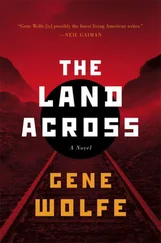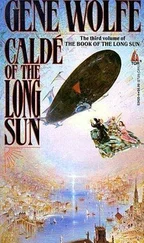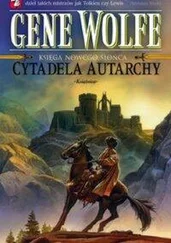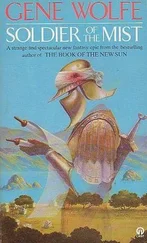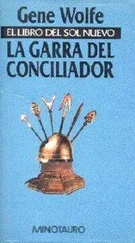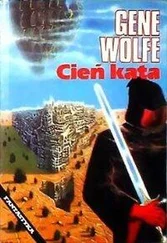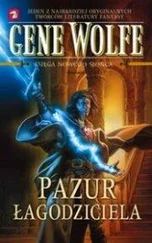Gene Wolfe - Soldier of Sidon
Здесь есть возможность читать онлайн «Gene Wolfe - Soldier of Sidon» весь текст электронной книги совершенно бесплатно (целиком полную версию без сокращений). В некоторых случаях можно слушать аудио, скачать через торрент в формате fb2 и присутствует краткое содержание. Жанр: Фэнтези, на английском языке. Описание произведения, (предисловие) а так же отзывы посетителей доступны на портале библиотеки ЛибКат.
- Название:Soldier of Sidon
- Автор:
- Жанр:
- Год:неизвестен
- ISBN:нет данных
- Рейтинг книги:3 / 5. Голосов: 1
-
Избранное:Добавить в избранное
- Отзывы:
-
Ваша оценка:
- 60
- 1
- 2
- 3
- 4
- 5
Soldier of Sidon: краткое содержание, описание и аннотация
Предлагаем к чтению аннотацию, описание, краткое содержание или предисловие (зависит от того, что написал сам автор книги «Soldier of Sidon»). Если вы не нашли необходимую информацию о книге — напишите в комментариях, мы постараемся отыскать её.
Soldier of Sidon — читать онлайн бесплатно полную книгу (весь текст) целиком
Ниже представлен текст книги, разбитый по страницам. Система сохранения места последней прочитанной страницы, позволяет с удобством читать онлайн бесплатно книгу «Soldier of Sidon», без необходимости каждый раз заново искать на чём Вы остановились. Поставьте закладку, и сможете в любой момент перейти на страницу, на которой закончили чтение.
Интервал:
Закладка:
Hathor. The goddess of joy, perfumes, cows, and much else, she was one of the kindest and most important Egyptian deities.
Hemuset. The goddess of fate. She was one of several invisible presences who attended the birth of an Egyptian child.
Horus. The hawk-headed pilot of the Sun Boat. He was the son of Osiris and Isis, the god of the day sky and of light, and a brave and chivalrous fighter for good.
House of Life. There is no modern equivalent for this term. Houses of Life were attached to temples. (A Pharaonic palace was a temple as well as a residence.) A House of Life might be a school, a college, a library, a hospital, or a combination of these.
Isis. The most important Egyptian goddess, whose cult soon spread to Nubia. When she was held captive following the murder of her husband, Osiris, Thoth helped her escape. She was the mother of Horus and commanded seven magical scorpions. She was also called Ast and Eset.
Kakia. One of the narrator's Persian soldiers.
Kames. A young Egyptian of good family.
Kashta. A Nubian priest of Set.
Kemet. Literally, "Black"-the Egyptians' name for their country.
Kush. The Nile Valley south of the third cataract and north of the confluence of the White and Blue Niles. The Nubian kings had originally been kings of Kush.
Latro. It seems clear that the narrator bore one name among the Egyptians and another among the Phoenician crew of the Gades, while his Persian soldiers and Median commander employed a third. For the most part, he represents all three by "L"; I have used Latro, Lewqys, and Lucius respectively.
Luhitu. This appears to be the Phoenician name for the narrator's nation or area.
Magi. One of the six Median tribes. Our word magic is derived from the name of this tribe.
Medjay. Nomads who roved the eastern and western edges of Kush and Wawat. The Lion People.
Mehit. One of several lion-headed goddesses, she seems to have been the actual lion goddess, as opposed to the better-known Sekhmet, who was fundamentally a war goddess. Note that Mehit was the wife of a hunting god, and that tame lions were used in the hunt.
Mennufer. The city the narrator designates by this name is certainly Memphis, a metropolis south of the delta. It was the capital of Egypt under the Persians.
Meroe. A principal city of southern Nubia (Kush).
Mfalme. That is, "king." Seven Lions.
Miam. A city of Wawat founded by Egyptians.
Mtoto. Probably "Child." The demon-scarred girl who becomes Myt-ser'eu's maidservant.
Muslak. The captain of the Gades.
Myt-ser'eu. "Kitten." The singing girl employed by the narrator.
Mzee. Probably "Elder." The man who guided Seven Lions' party.
Nehasyu. The dominant tribe in Nubia, whom the narrator often calls the Crocodile People.
Nasakhma. A young Nubian of royal blood.
Neht-nefret. "Tall Sycamore." The singing girl employed by Muslak.
Nekhen. One of the centers of the cult of Horus.
Nine Bows. Egypt's foreign enemies, a traditional phrase.
Nubia. Egypt's principal rival in Africa. At the time of the scroll, Nubia appears to have extended from the first cataract to the sixth. Earlier, its northern border had been at the third, and its rule had extended south into the valley of the Blue Nile.
Nysa. The original Nysa is said to have been a man killed by Dionysus. Some authorities list ten places in Europe, Asia, and Africa called Nysa. See the Foreword.
Osiris. One of the most important Egyptian gods. He was the god of resurrection and the patron of the dead. Isis was his wife, Set his wicked brother. The popular faith of Egypt hinged upon the cult of Osiris.
Parsa. Persia, or the Persian Empire.
Piy. The supervisor at a Nubian gold mine.
Pre. One of the divisions of the Nile, which split as it flowed through the delta.
Punt. A remote part of Africa, probably the coast of Somalia.
Qanju. A Mede dispatched by Prince Achaemenes to explore the Nile south of Egypt.
Ra. One of the most important Egyptian gods, the god of the sun and commander of the sun boat. Each pharaoh was fathered by Ra. He was also called Re and Phra.
Ra'hotep. "Ra Is Content." An Egyptian physician.
Red God. Set, q.v.
Red Land. The desert east and west of Egypt.
Riverland. Egypt. Our word comes from the Latin name for this country, which was taken from Greek; the Greek word originally designated the Nile, not the nation.
Sabra. The wax woman animated by Sahuset and the narrator. sagan. The lieutenant of a governor.
Sahuset. A magician of Mennufer.
Sais. A major city of the delta. satrap. The governor of a province of the Persian Empire. scarab. A sacred beetle. An amulet in the shape of this beetle; these were used as seals.
Seven Lions. A king of Nysa.
Sesostris. A pharaoh of the Twelfth Dynasty, better known as Senusret.
Set. Osiris's brother, the god of the south and the desert. Also Seth, Sethi, Sit, et cetera.
Sidon. A Phoenician city at the eastern end of the Mediterranean, north of Tyre.
Tepu. The hippopotamus.
Thoth. The god of wisdom, learning, and the moon. He is most often depicted as an ibis-headed man. Also Thot.
Thotmaktef. Qanju's Egyptian scribe.
Tin Isles. The Scillys and the Cornish coast.
Unguja. Perhaps"Burned." Seven Lions' chief advisor.
Uraeus. The narrator's slave. The sacred cobra.
Uro. One of the narrator's Egyptian soldiers.
Utundu. "Mischief." Cheche's younger son.
Vayu. One of the narrator's Persian soldiers.
Vinjari. "Roamer." Cheche's older son. wadi. A dry watercourse.
Wast. The Egyptian Thebes.
Wawat. Northern Nubia. The Nile Valley between the first and third cataracts.
White Wall. The strongest fortress in Egypt. xu. An evil spirit, a demon. (I have so translated the scroll's daemonium.)
Yam. The Nile Valley between the second and third cataracts, once independent.
Yeb. The Persian name for Abu.
Интервал:
Закладка:
Похожие книги на «Soldier of Sidon»
Представляем Вашему вниманию похожие книги на «Soldier of Sidon» списком для выбора. Мы отобрали схожую по названию и смыслу литературу в надежде предоставить читателям больше вариантов отыскать новые, интересные, ещё непрочитанные произведения.
Обсуждение, отзывы о книге «Soldier of Sidon» и просто собственные мнения читателей. Оставьте ваши комментарии, напишите, что Вы думаете о произведении, его смысле или главных героях. Укажите что конкретно понравилось, а что нет, и почему Вы так считаете.

